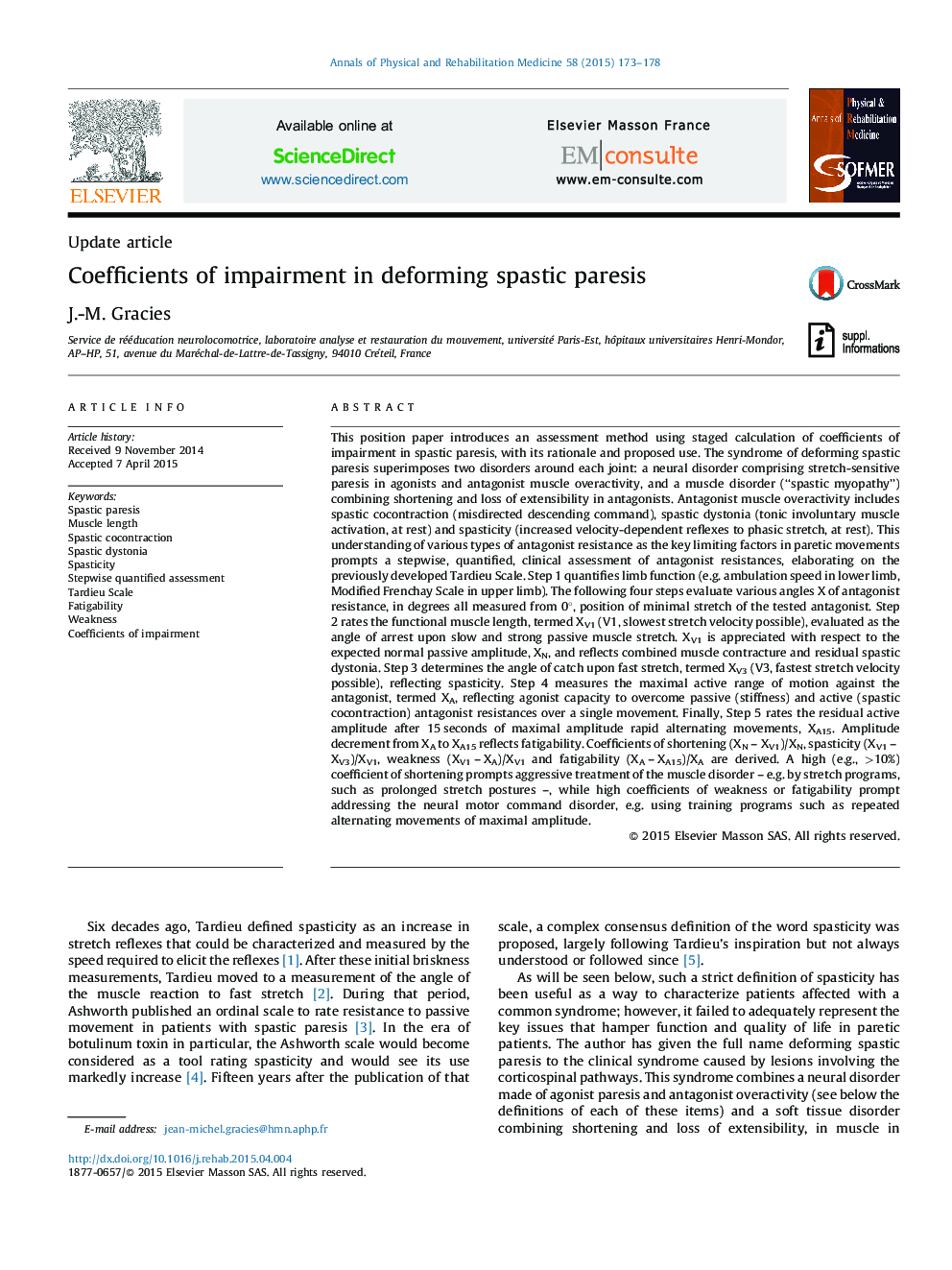| Article ID | Journal | Published Year | Pages | File Type |
|---|---|---|---|---|
| 6204064 | Annals of Physical and Rehabilitation Medicine | 2015 | 6 Pages |
This position paper introduces an assessment method using staged calculation of coefficients of impairment in spastic paresis, with its rationale and proposed use. The syndrome of deforming spastic paresis superimposes two disorders around each joint: a neural disorder comprising stretch-sensitive paresis in agonists and antagonist muscle overactivity, and a muscle disorder (“spastic myopathy”) combining shortening and loss of extensibility in antagonists. Antagonist muscle overactivity includes spastic cocontraction (misdirected descending command), spastic dystonia (tonic involuntary muscle activation, at rest) and spasticity (increased velocity-dependent reflexes to phasic stretch, at rest). This understanding of various types of antagonist resistance as the key limiting factors in paretic movements prompts a stepwise, quantified, clinical assessment of antagonist resistances, elaborating on the previously developed Tardieu Scale. Step 1 quantifies limb function (e.g. ambulation speed in lower limb, Modified Frenchay Scale in upper limb). The following four steps evaluate various angles X of antagonist resistance, in degrees all measured from 0°, position of minimal stretch of the tested antagonist. Step 2 rates the functional muscle length, termed XV1 (V1, slowest stretch velocity possible), evaluated as the angle of arrest upon slow and strong passive muscle stretch. XV1 is appreciated with respect to the expected normal passive amplitude, XN, and reflects combined muscle contracture and residual spastic dystonia. Step 3 determines the angle of catch upon fast stretch, termed XV3 (V3, fastest stretch velocity possible), reflecting spasticity. Step 4 measures the maximal active range of motion against the antagonist, termed XA, reflecting agonist capacity to overcome passive (stiffness) and active (spastic cocontraction) antagonist resistances over a single movement. Finally, Step 5 rates the residual active amplitude after 15 seconds of maximal amplitude rapid alternating movements, XA15. Amplitude decrement from XA to XA15 reflects fatigability. Coefficients of shortening (XN - XV1)/XN, spasticity (XV1 - XV3)/XV1, weakness (XV1 - XA)/XV1 and fatigability (XA - XA15)/XA are derived. A high (e.g., >10%) coefficient of shortening prompts aggressive treatment of the muscle disorder - e.g. by stretch programs, such as prolonged stretch postures -, while high coefficients of weakness or fatigability prompt addressing the neural motor command disorder, e.g. using training programs such as repeated alternating movements of maximal amplitude.
